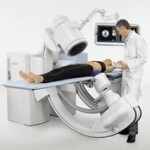Cavernitis: Symptoms and Treatment
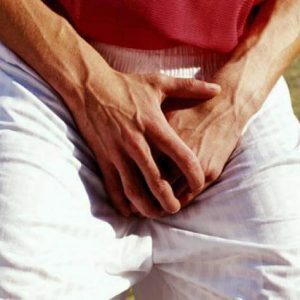 Cavernitis is a pathological inflammation of the cavernous bodies of a cylindrical shape located within the penis.
Cavernitis is a pathological inflammation of the cavernous bodies of a cylindrical shape located within the penis.
The main function of cavernous bodies is the onset and maintenance of an erection.Deferring treatment can lead to erectile dysfunction.
Table of contents: Classification of cavernitis Causes of cavernitis Symptoms of cavititis Diagnosis of cavernitis Methods for treatment of cavernitis Prevention measuresClassification of cavernitis
According to the form of the disease, the disease is divided into:
- acute.This form is accompanied by swelling and condensation of the penis, fever and severe pain.Sometimes there are spontaneous painful erectile seizures;
- chronic.It develops against the background of an acute form, and it is practically asymptomatic.
By origin, the pathology is divided into these types:
- purulent.Infection penetrates through the urethra.Purulent nodules are formed;
- is syphilitic.On cavernous bodies infiltrates are formed;
- gonorrhea.Infection gets through the lymph and blood from other affected organs.
Causes of cavernitis
The main cause of the development of cavernitis is the causative agent of an infectious disease that enters the cavernous bodies of the penis.Most often, the pathogen is gonorrhea.
The infection spreads from the urethra, where it usually parasitizes.
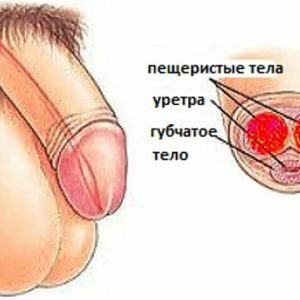 This is due to injuries, such as:
This is due to injuries, such as:
- surgery with damage to cavernous bodies;
- trauma of the penis with rupture of one of the cavernous bodies;
- continued use of the Foley catheter;
- injection into the penis.
Important! If the treatment of the acute form of the disease is not begun in time, it will develop into a chronic form.
There are several main reasons for the development of cavernitis:
- infectious chronic diseases;
- venereal diseases;
- acute urethritis.
Symptoms of cavernitis
The main signs of cavititis:
- acute pain in the penis;
- high temperature, fever;
- pain in the groin with enlarged lymph nodes;
- dizziness;
- curvature of the penis during excitation
- headache;
- swelling and redness of the male genital organ, not associated with excitation;
- formation of painful compaction.
 In acute form, there is a constant erection, which makes it difficult and sometimes makes urination impossible. After a loss of erection, the swelling of the penis does not go away.Over time, the cavernous bodies form an abscess, which eventually opens up into the lumen of the urethra.However, the pain becomes less intense.A lot of cloudy pus stands out from the urethra.
In acute form, there is a constant erection, which makes it difficult and sometimes makes urination impossible. After a loss of erection, the swelling of the penis does not go away.Over time, the cavernous bodies form an abscess, which eventually opens up into the lumen of the urethra.However, the pain becomes less intense.A lot of cloudy pus stands out from the urethra.
In the next stage, the place of the former abscess is cicatrized, as a result of which the genital deformity occurs, which considerably complicates or makes impossible the sexual act.
Important! The chronic form is practically asymptomatic.It is possible for a slight tingling in the penis and partial densification.Pain occurs only with an erection.
In the absence of qualified treatment, the loss of erection develops, which subsequently leads to organic impotence.
Diagnosis of cavretitis
First of all, studies are conducted to determine the causative agent of the disease. In order to identify or eliminate sexually transmitted infections, the following tests are prescribed:
- bacteriological culture of excretion from the urethra and its immediate contents;
- DNA examination of scraping from urogenital tract;
- Bacterioscopy of the smear from the urethra.
To identify the common infection that caused inflammation, designate:
- US of the genital organ;
- a clinical blood test;
- general urinalysis;
- biochemical blood test;
- blood test for the detection of tumor markers.
Urine and blood sampling is performed for DNA diagnostics to detect the presence of DNA viruses of chlamydia, herpes, mycoplasma, ureaplasma, cytomegalovirus.
For the diagnosis of chronic cavernitis, uretroscopy and cavernosography are used.The last study provides X-ray of the penis in a state of erection.Before this procedure, enter a contrast agent.The series of images obtained allows one to identify atrophied fragments and plaques, and also provides information on the structure of cavernous bodies, etc.
Urethroscopy examines the urethra with an endoscope.The study is conducted under local anesthesia and with an empty bladder.
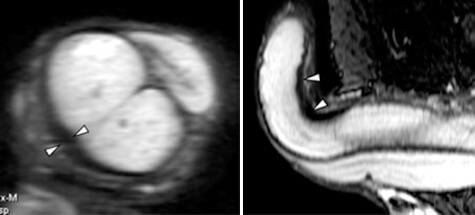
Methods for treatment of cavernitis
Treatment of the disease is carried out only in the hospital.Conducting therapy at home is impossible .Treatment begins with the elimination of an infection that has entered the genitals.Only by eliminating the source, you can completely cure the patient.
For this, the following preparations are used:
- antibiotics;
- immune stimulants;
- absorbents;
- anti-inflammatory drugs;
In addition to medical treatment, physiotherapeutic procedures are prescribed:
- magnetic therapy;
- UHF;
- laser therapy;
- ultrasound;
- electrophoresis;
- rinsing with antiseptic solutions.
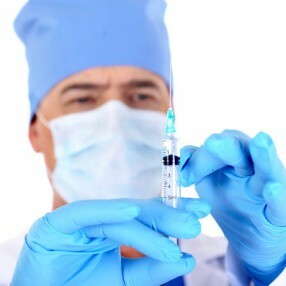 Treatment of cavernitis by folk remedies is not carried out.
Treatment of cavernitis by folk remedies is not carried out.
Chronic form is treated with immunostimulants and physiotherapy procedures.When the form is started, the surgical method is used. Carry a dissection of the cavernous bodies and eliminate the purulent exudate.
Correction therapy is prescribed for the curvature of the penis.With erectile dysfunction, a falloprosthesis is performed.
Complications of
The most common complication of this pathology is erectile dysfunction.
In addition, if the treatment of cavititis is not started on time, the following complications are possible:
- infertility;
- development of an abscess at the site of inflammation;
- breakthrough of the abscess inward along the urinary canal;
- deformation of the penis.
Important! In the most neglected cases gangrene of the sexual organ can come.In this case, treatment is carried out by amputation.
Prevention measures
There are preventive measures that can prevent the development of pathology:
- timely treatment of urethritis, venereal and other infectious diseases;
- for the first symptoms, consult a doctor;
- Avoid injury;
- observe the hygiene of the penis;
- strengthen immunity;
- avoid accidental sexual intercourse.
If the first symptoms appear, consult a specialist immediately.This will help to diagnose the disease in time, start treatment and avoid complications.
Radevich Igor Tadeushevich, a first-line sexologist andrologist



